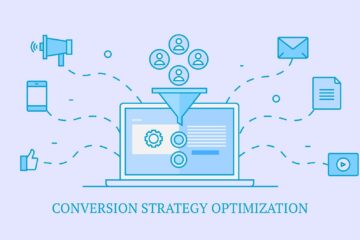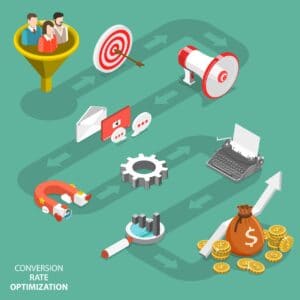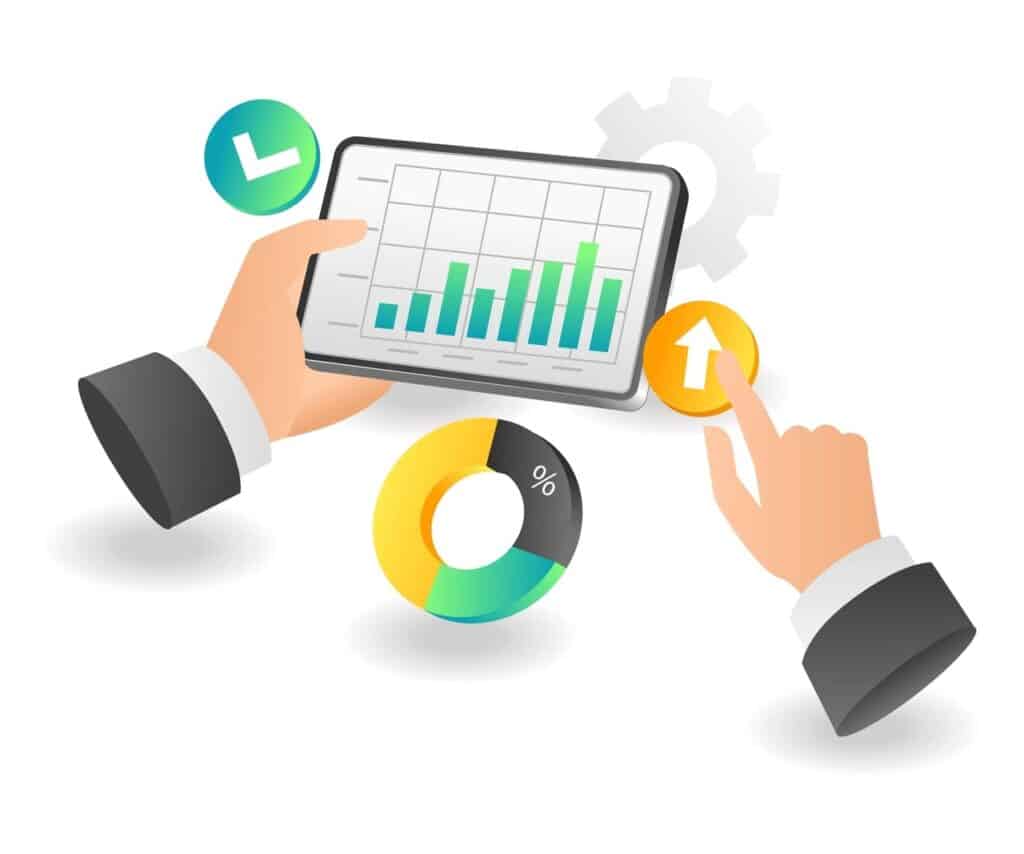In the always changing sales landscape, have you ever thought about the game-changing impact of technology? From door-to-door sales in the past to today’s advanced CRM systems, the journey has been truly revolutionary.
As field representatives, leaders, managers, and teams, understanding this transformation is crucial. So, let’s embark on this enlightening journey and explore how technology is reshaping the realm of field sales prospecting.
A Closer Look Into Sales Prospecting
Sales prospecting, often described as both an art and a science, has long been the bedrock upon which businesses expand and thrive.
Cast your mind back to the era when representatives would painstakingly trawl through hefty directories, engage in relentless cold calls, and physically knock on countless doors. While these methods bore fruit and had their moments of glory, they were undeniably laborious and lacked the finesse we associate with modern techniques.
Enter the age of digital transformation and the landscape of sales prospecting has been forever altered.
So, what ignited this monumental shift? The answer lies in the seamless amalgamation of technology into the sales process.
With the advent of sophisticated data analytics and the marvels of Artificial Intelligence, teams today are equipped to pinpoint prospects with unparalleled accuracy. It’s akin to switching from a broadsword to a scalpel in targeting potential customers.
Gone are the days when field reps would primarily lean on their instincts, often making decisions based on limited data.
Today’s sales landscape is dominated by powerful tools like CRM systems, which serve as vast reservoirs of invaluable information. This evolution from relying on gut feelings to harnessing data-driven insights has not only ramped up efficiency but has also elevated the caliber of leads generated.
After all, securing high-quality leads is the precursor to achieving those coveted conversions. Yet, this transformation is just scratching the surface. Let’s journey further into this realm and uncover the intricacies of modern sales prospecting.
The Indispensable Role of Technology in Modern Sales
Picture yourself attempting to traverse the vast expanse of the open sea, devoid of any navigational tools. This daunting scenario mirrors the challenges field teams faced in the pre-technology era.
Fast forward to the present, and technology emerges as the North Star, guiding sales professionals through the intricate maze of the market, illuminating paths to untapped opportunities.
Pioneers like Salesforce and HubSpot have not just entered the sales arena; they’ve redefined it. Their cutting-edge CRM systems serve as more than mere repositories of customer data. They’re analytical powerhouses, deciphering intricate patterns in customer behavior, preferences, and purchasing habits.
However, the magic of technology isn’t confined to data analytics. It’s reshaping the very fabric of how sales teams communicate, collaborate, and connect. Platforms like Zoom and Skype have democratized interactions, making geographical distances irrelevant.
Virtual meetings, once a novelty, are now integral to sales strategies, ensuring that field reps remain in sync with prospects, regardless of miles or time zones separating them.
This evolution prompts a pivotal inquiry: In this tech-driven age, how can field teams optimize these innovations to supercharge their sales endeavors?
Data-Driven Sales: Unleashing the Potential of Analytics in Field Sales Prospecting
In the dynamic world of sales, data has emerged as the linchpin, driving strategies, decisions, and outcomes. No longer are field teams shooting in the dark or relying solely on intuition. Instead, they’re harnessing the formidable power of analytics to navigate the complex landscape of field sales prospecting.
But what makes data-driven sales such a game-changer? Here are some compelling benefits of data-driven field sales prospecting.
- Precision Targeting: With data analytics, sales teams can identify and zero in on high-potential leads, ensuring efforts are directed towards prospects most likely to convert.
- Enhanced Efficiency: By understanding patterns and trends, sales reps can streamline their approach, eliminating redundant efforts and focusing on strategies that yield results.
- Informed Decision Making: Data provides actionable insights, enabling sales professionals to make decisions grounded in facts rather than mere assumptions.
- Predictive Capabilities: Advanced analytics can forecast potential customer behaviors, allowing field teams to anticipate needs and tailor their pitches accordingly.
- Personalized Outreach: With a deeper understanding of prospect preferences and behaviors, sales reps can craft personalized messages, increasing engagement and resonance.
- Competitive Edge: In a saturated market, having data-driven insights gives sales teams an edge, positioning them a step ahead of competitors.
- Continuous Improvement: Analytics provides feedback on what’s working and what’s not, allowing for continuous refinement of sales strategies.
- Risk Mitigation: Data-driven insights can highlight potential pitfalls or areas of concern, enabling sales teams to address issues proactively.
In essence, the integration of analytics into field sales prospecting is similar to equipping sales reps with a supercharged engine. It not only propels them forward but ensures the journey is optimized, efficient, and, most importantly, successful.
A. Automation in Sales: Efficiency Meets Personalization
Automation in sales refers to the use of technology to perform repetitive tasks, streamlining processes and enhancing efficiency.
It’s the marriage of advanced tools and strategies to optimize sales activities without compromising on the personal touch that’s crucial in building relationships.
The Role of Automation in Field Sales Prospecting
- Lead Scoring: Automatically ranks prospects based on their potential to convert, ensuring sales reps focus on high-potential leads.
- Automated Email Campaigns: Send out timely and relevant emails to prospects, keeping them engaged and informed.
- Task Reminders: Automated reminders ensure that sales reps never miss a follow-up or an important meeting.
- Data Entry: Reduces manual data entry, ensuring that CRM systems are always updated with the latest information.
- Performance Analytics: Provides real-time insights into sales activities, highlighting areas of improvement.
- Customer Segmentation: Automatically segments prospects based on various criteria, allowing for targeted outreach.
- Chatbots: Offers instant responses to customer queries, ensuring continuous engagement.
Sales automation leverages algorithms, AI, and predefined criteria to streamline activities, ensuring that sales reps can focus on relationship-building. The goal is to enhance efficiency while retaining the essential human touch.
Modern sales automation harnesses a plethora of technologies. Platforms like Beest, HubSpot, and Marketo stand at the forefront, offering a suite of features and functions – from automated email campaigns to intricate lead-scoring systems. Additionally, AI-driven chatbots and predictive analytics tools play pivotal roles in enhancing the automation process.
Benefits of Utilizing Automation in Field Sales Prospecting
- Time Efficiency: Frees up sales reps from mundane tasks, allowing them to focus on core sales activities.
- Consistency: Ensures a consistent approach to prospecting, reducing the chances of missed opportunities.
- Enhanced Engagement: With timely follow-ups and communications, prospects remain engaged and informed.
- Data Accuracy: Reduces human errors in data entry, ensuring accurate and up-to-date information.
- Scalability: Allows sales teams to handle a larger volume of prospects without compromising on quality.
- Cost-Effective: By streamlining processes, companies can achieve better results with fewer resources.
- Real-time Insights: Provides sales teams with immediate feedback, allowing for quick adjustments.
- Personalized Outreach: Even automated communications can be tailored to individual prospect preferences.
- Improved Conversion Rates: With a more focused approach, sales reps can achieve higher conversion rates.
- Competitive Advantage: In a tech-driven world, companies leveraging automation effectively can stay ahead of competitors.
B. Social Media: The New Frontier for Sales Prospecting
Social media encompasses digital platforms where individuals and organizations interact, share content, and build online communities. From personal interactions to business networking, these platforms have transformed the way we communicate and engage in the modern era.
The Role of Social Media in Field Sales Prospecting
- Audience Reach: Access to billions of users worldwide, offering a vast pool of potential leads.
- Brand Visibility: Provides a platform for sales reps and businesses to showcase their products, services, and values.
- Direct Engagement: Allows for real-time interactions with prospects, answering queries, and addressing concerns.
- Thought Leadership: Sharing industry insights and knowledge positions sales reps as experts in their field.
- Feedback Loop: Immediate feedback on products, services, or content helps in refining sales strategies.
- Targeted Outreach: Platforms offer services to target specific demographics, ensuring relevant prospect engagement.
- Building Trust: Regular, authentic interactions on social media foster trust and credibility among prospects.
Social media operates on the principle of interconnected networks, where users can share content, engage with others, and participate in online communities.
Algorithms on these platforms prioritize content based on user preferences, interactions, and relevance. For sales reps, it’s a dynamic space where genuine engagement, consistent presence, and valuable content determine success.
The digital realm offers a plethora of tools tailored for social media prospecting. Platforms like LinkedIn Sales Navigator provide advanced search and engagement tools specifically for sales professionals. Additionally, tools like Hootsuite and Buffer allow for scheduled posts, analytics, and multi-platform management, optimizing the social media prospecting process.
Benefits of Utilizing Social Media in Field Sales Prospecting
- Global Reach: Access to a worldwide audience, breaking geographical barriers.
- Cost-Effective: Compared to traditional methods, social media offers a cost-effective prospecting avenue.
- Real-time Insights: Immediate feedback and analytics help refine strategies on the go.
- Personalized Engagement: Allows for tailored interactions based on prospect preferences and behaviors.
- Diverse Platforms: Different platforms cater to different demographics, allowing for varied prospecting strategies.
- Building Relationships: Beyond just sales, social media fosters long-term relationships with prospects and clients.
- Rapid Response: Enables sales reps to address queries or concerns in real-time, enhancing customer satisfaction.
- Collaborative Opportunities: Engage with other industry leaders, participate in discussions, and co-create content.
- Continuous Learning: Stay updated with industry trends, competitor activities, and customer preferences.
- Enhanced Brand Loyalty: Regular, genuine interactions on social media can lead to increased brand loyalty among prospects.
C. AI and Predictive Analytics: The Future of Sales Prospecting
Artificial Intelligence (AI) means machines, like computers, copying human thinking to do tasks needing intelligence. Predictive Analytics, instead, uses math and machine learning to guess future results from past data.
The Role of AI and Predictive Analytics in Field Sales Prospecting
- Intelligent Lead Scoring: AI algorithms rank prospects based on their likelihood to convert, optimizing sales efforts.
- Personalized Recommendations: Offer tailored product or service suggestions based on a prospect’s past behaviors and preferences.
- Proactive Engagement: Predictive insights allow sales reps to anticipate and address prospect needs even before they’re expressed.
- Enhanced Communication: AI-driven chatbots provide instant, relevant responses to prospect queries.
- Behavior Analysis: Understand and analyze prospect behaviors to refine sales strategies.
- Sales Forecasting: Predict future sales trends based on past data, aiding in strategic planning.
- Risk Assessment: Evaluate potential risks in sales strategies and adjust accordingly.
AI operates by processing vast amounts of data, learning patterns, and making decisions based on its learning. Predictive analytics, meanwhile, scrutinizes historical data to discern patterns and uses statistical algorithms to forecast future outcomes.
Together, they offer a dynamic duo of insights and foresight, revolutionizing the sales prospecting process.
Consider the success of e-commerce behemoth, Amazon. By adeptly employing predictive analytics, they present users with product recommendations tailored to their browsing history, leading to amplified sales and heightened customer satisfaction.
Numerous advanced technologies lead this revolution. Salesforce’s Einstein Analytics is a prime example, leveraging AI to provide predictive sales insights. Other paltforms, like IBM’s Watson and Tableau, combine AI and predictive analytics capabilities to offer a comprehensive suite of sales prospecting solutions.
Benefits of Utilizing AI and Predictive Analytics in Field Sales Prospecting
- Enhanced Efficiency: Automate routine tasks, allowing sales reps to focus on relationship-building.
- Data-Driven Decisions: Base strategies on concrete data rather than mere intuition.
- Increased Conversion Rates: Tailored approaches lead to higher chances of converting prospects.
- Competitive Advantage: Stay ahead of competitors by leveraging the latest tech innovations.
- Real-time Insights: Get immediate feedback and adjust strategies in real time.
- Cost Savings: Optimize resources by focusing on high-potential leads and strategies.
- Improved Customer Experience: Understand and cater to prospect needs more effectively.
- Strategic Planning: Forecast sales trends and plan strategies accordingly.
- Risk Mitigation: Identify potential pitfalls and adjust strategies proactively.
- Continuous Learning: AI systems continuously learn and adapt, ensuring strategies remain relevant and effective.
D. Virtual Meets Reality: Integrating Digital and Field Sales
“Virtual Meets Reality” encapsulates the convergence of digital tools and traditional face-to-face interactions in the sales domain.
It represents the harmonious integration of online and offline sales strategies, ensuring a comprehensive and effective approach to prospecting.
The Role of Virtual Meets Reality in Field Sales Prospecting
- Enhanced Reach: Access prospects across geographical boundaries through virtual tools.
- Personal Touch: Retain the authenticity and trust-building power of in-person interactions.
- Flexibility: Offer prospects the convenience of choosing between virtual and face-to-face meetings.
- Cost-Efficiency: Reduce travel and associated costs by leveraging virtual meetings when appropriate.
- Immediate Engagement: Use virtual apps for instant demos, presentations, or discussions.
- Holistic View: Combine insights from virtual interactions with on-ground feedback for a 360-degree view of prospects.
- Adaptability: Quickly switch between virtual and real-world strategies based on prospect preferences or global situations (like pandemics).
Virtual Meets Reality operates on the principle of fluidity, seamlessly transitioning between online and offline sales tactics based on the situation and prospect preference.
Digital tools facilitate instant communication and presentations, while traditional field sales methods ensure deeper relationship-building. The synergy of these approaches ensures a holistic sales strategy.
The digital landscape offers a plethora of tools to facilitate this convergence. Platforms like Zoom and Microsoft Teams enable real-time virtual interactions, while augmented reality (AR) tools can enhance product demos. Additionally, CRM systems like Salesforce can integrate insights from both virtual and real-world interactions, offering a consolidated view of prospect engagements.
Benefits of Utilizing Virtual Meets Reality in Field Sales Prospecting
- Broader Audience: Engage with prospects globally without geographical constraints.
- Resource Optimization: Save on travel and logistics costs with virtual interactions.
- Enhanced Engagement: Offer interactive virtual demos or presentations, enhancing prospect engagement.
- Personalized Approach: Tailor the sales strategy based on prospect comfort with virtual or in-person interactions.
- Rapid Response: Address queries or concerns instantly through virtual tools.
- Safety and Convenience: In situations like global pandemics, virtual tools ensure safety without halting sales activities.
- Data Integration: Combine insights from both approaches for a comprehensive understanding of prospect behavior.
- Scalability: Easily scale up virtual interactions during high-demand periods.
- Building Trust: Retain the authenticity and trust of face-to-face meetings, crucial for closing deals.
- Adaptive Strategy: Quickly adapt to changing global scenarios or market demands.

10 Smart Tools and Modern Platforms for Field Sales Prospecting
In the fast-paced realm of sales, the right tools can be the difference between success and stagnation. While many platforms claim to be the best, a few truly stand out, offering unparalleled advantages for field sales teams.
Let’s delve deeper into these tools and uncover the unique features that make them indispensable.
1. Beest.app
Positioned at the forefront of sales tools, Beest is specifically crafted for the needs of field sales teams.
- Lead Tracking: Offers meticulous tracking, ensuring no potential customer goes unnoticed.
- Analytics: Provides deep insights into sales metrics, helping teams refine their strategies.
- User-Friendly Interface: Designed with simplicity in mind, it ensures even those new to technology can harness its full potential seamlessly.
2. Salesforce
A behemoth in the CRM domain, this tool is synonymous with efficient customer relationship management.
- Lead Management: Streamlines the process of tracking and nurturing potential customers.
- Customer Interactions: Logs every interaction, ensuring sales reps have a holistic view of the customer journey.
- Sales Forecasting: Uses data to predict future sales trends, aiding in strategic planning.
3. HubSpot
More than just a marketing tool, HubSpot’s CRM is a treasure trove for sales teams.
- Lead Tracking: Monitors potential customers, ensuring timely follow-ups.
- Email Automation: Allows for personalized email campaigns that run on autopilot.
- Detailed Analytics: Offers insights into campaign performance, lead behavior, and more.
4. Marketo
A leader in marketing automation, this tool is also a powerful ally for sales teams.
- Lead Management: Efficiently categorizes and nurtures potential customers.
- Automated Email Campaigns: Ensures consistent communication with leads.
- Performance Metrics: Provides a clear view of how sales strategies are performing.
5. ZoomInfo
A repository of B2B contact information, this tech-advanced tool is a must-have for sales reps.
- Contact Database: Offers access to a vast database of potential leads.
- Integration Capabilities: Seamlessly integrates with other sales tools, enhancing efficiency.
- Lead Scoring: Prioritizes leads based on their likelihood to convert.
6. LinkedIn Sales Navigator
A tool designed for the digital age, it leverages the power of LinkedIn for sales prospecting.
- Lead Recommendations: Suggests potential leads based on set criteria.
- Engagement Tools: Allows for direct communication with leads on the platform.
- Insights: Provides valuable data on lead activity and engagement.
7. Pipedrive
With its visual approach to sales, Pipedrive offers clarity and efficiency.
- Visual Sales Pipelines: Offers a clear view of deals at every stage.
- Activity Tracking: Monitors interactions with leads, ensuring timely follow-ups.
- Customizable Workflows: Allows teams to tailor the platform to their specific needs.
8. Outreach
A platform dedicated to sales engagement, this tool ensures no lead is left behind.
- Sequenced Campaigns: Automates email campaigns, ensuring consistent communication.
- Task Automation: Streamlines repetitive tasks, allowing reps to focus on relationship-building.
- Performance Analytics: Offers insights into campaign effectiveness and areas for improvement.
9. InsideSales.com
Marrying AI with sales, InsideSales.com is a game-changer.
- AI-Driven Insights: Offers predictive analytics, guiding reps towards high-potential leads.
- Lead Scoring: Ranks leads based on their likelihood to convert.
- Optimization Recommendations: Provides actionable insights to refine sales strategies.
10. Zoho CRM
A versatile platform, Zoho CRM caters to a myriad of field sales prospecting needs.
- Email Marketing: Allows for targeted email campaigns to nurture leads.
- AI-Powered Assistance: Offers insights and recommendations driven by artificial intelligence.
- Multichannel Communication: Integrates with various communication platforms, ensuring consistent engagement.
In the vast cosmos of sales tools, these platforms shine the brightest, offering solutions tailored to the unique challenges of field sales prospecting. However, like any tool, their real strength comes from how they’re used.
In the hands of a capable sales team, with the right strategy, these tools can unleash extraordinary growth and triumph.

Overcoming Hurdles in Tech-Driven Sales
In the realm of sales, technology has emerged as both a boon and a bane. While it promises efficiency and precision, it also presents a set of unique challenges. But as with all challenges, they pave the way for innovation and growth.
Let’s delve into these challenges and uncover strategies to turn them into opportunities.
1. Resistance to Technology Adoption
Embracing new technology can be daunting for many sales reps, especially those accustomed to traditional methods. This resistance can hinder the full utilization of tech tools.
Fear of the unknown, lack of proper training, and concerns about technology replacing human roles can contribute to this resistance.
Technological Solutions: Implementing user-friendly platforms and offering hands-on training sessions can ease the transition. Additionally, feedback tools can help identify and address specific concerns.
- Offer regular training sessions tailored to different proficiency levels.
- Highlight success stories where technology has amplified sales results.
- Provide a support system where reps can ask questions and seek help.
- Encourage a culture of continuous learning and adaptation.
- Recognize and reward those who actively engage with and champion new technologies.
2. Data Privacy Concerns
With the rise of technology comes the increased responsibility of handling customer data. Ensuring data privacy is paramount, and breaches can erode trust.
Lack of secure platforms, inadequate knowledge about data protection regulations, and human errors can lead to data vulnerabilities.
Technological Solutions: Investing in secure CRM systems and encryption tools can safeguard data. Regular audits and compliance checks can further bolster security.
- Stay updated with the latest data protection regulations.
- Conduct regular security training for the sales team.
- Implement multi-factor authentication for accessing sensitive data.
- Schedule periodic data security audits.
- Foster a culture where data privacy is a top priority.
3. Over-reliance on Technology
While technology is a powerful tool, over-reliance can lead to a loss of personal touch in sales interactions.
The allure of automation, the misconception that technology can replace human interactions, and the drive for efficiency can lead to this challenge.
Technological Solutions: Tools that facilitate human-tech collaboration, like AI-driven insights combined with personal follow-ups, can strike the right balance.
- Prioritize face-to-face or virtual meetings for key discussions.
- Use technology as an aid, not a replacement, for human interactions.
- Encourage sales reps to personalize automated communications.
- Regularly gather feedback from clients on their communication preferences.
- Promote a balanced approach, blending technology with personal touchpoints.
4. Information Overload
With a plethora of tools offering insights and data, sales reps can feel overwhelmed, leading to decision paralysis.
Multiple platforms generating vast amounts of data, lack of clarity on which metrics matter, and the absence of streamlined reporting can contribute to this overload.
Technological Solutions: Integrative platforms that consolidate data and offer clear, actionable insights can alleviate this challenge.
- Train sales reps on discerning key metrics from noise.
- Implement dashboards that offer a consolidated view of crucial data.
- Schedule regular review meetings to discuss and interpret data.
- Encourage reps to take breaks and avoid constant data immersion.
- Foster a culture of data-driven decision-making, emphasizing quality over quantity.
5. Rapid Technological Changes
The tech landscape is ever-evolving, and keeping up can be challenging, leading to tool redundancy and inefficiencies.
The rapid pace of technological advancements, the influx of new tools in the market, and shifting business needs can cause this challenge.
Technological Solutions: Adopting flexible platforms that can integrate with newer tools and evolve with changing needs can be beneficial.
- Stay updated with the latest in sales technology through workshops and seminars.
- Foster a culture of adaptability and continuous learning.
- Periodically review and update the tech stack to ensure relevance.
- Encourage feedback from sales reps on tool effectiveness and areas of improvement.
- Collaborate with tech vendors for regular updates and training.
6. Integration Issues
With multiple tools in play, ensuring they work seamlessly together can be a hurdle, leading to data silos and inefficiencies.
Using platforms that don’t support integrations, lack of technical expertise, and not prioritizing integration can lead to this challenge.
Technological Solutions: Opting for platforms that support API integrations and using middleware solutions can ensure smooth data flow.
- Prioritize integration when selecting new tools.
- Invest in training sessions focused on tool integration.
- Regularly review data flow and identify bottlenecks.
- Collaborate with IT teams to ensure seamless integrations.
- Opt for comprehensive platforms that offer multiple functionalities, reducing the need for numerous tools.
7. High Costs of Technology
Investing in the latest sales tech can be expensive, and ensuring a return on investment is crucial.
Opting for high-end tools without assessing needs, lack of budgeting, and not utilizing tools to their full potential can lead to high costs.
Technological Solutions: Cloud-based solutions and subscription models can offer cost-effective alternatives to expensive one-time purchases.
- Conduct a cost-benefit analysis before investing in new tools.
- Opt for scalable solutions that can grow with business needs.
- Train sales reps to ensure maximum tool utilization.
- Regularly review tool performance and ROI.
- Negotiate with vendors for favorable pricing and payment terms.
In the journey of tech-driven sales, challenges are but stepping stones to greater efficiency and success. By understanding these hurdles and implementing strategic solutions, sales teams can not only navigate them but also leverage them as growth opportunities.

Final Thoughts | Mastering Tech-Based Field Sales Prospecting
The world of field sales is undergoing a seismic shift. And at the heart of this transformation lies technology. From data-driven insights to AI-powered predictions, technology is reshaping the landscape of field sales prospecting.
But amidst this whirlwind of innovations, one thing remains constant – the importance of genuine relationships. Technology, with all its advantages, is merely a tool. It’s how sales reps wield this tool that makes all the difference.
As we pause at the junction of tradition and innovation, one fact is evident. The future of field sales prospecting isn’t solely adopting technology; it’s merging it with timeless values of trust, authenticity, and real engagement.
Book your free demo with Beest.app today and enjoy effective and efficient tech-based field sales prospecting.















